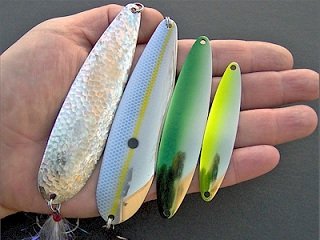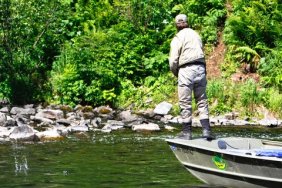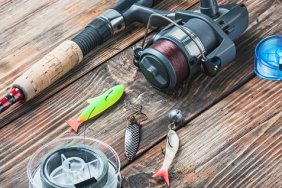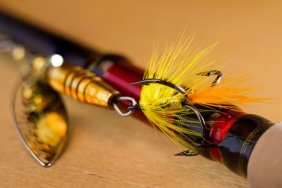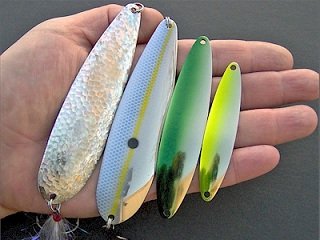 Spoons are a lure that should have a permanent place in any fisherman’s tackle box, for a number of reasons. Some cast a mile and cover water with swift effectiveness, while others maintain a controlled action at a precise depth. Many different species of fish strike spoon with equal aggression. Dozens of companies offer varying styles of spoons that are useful in different situations. The most important characteristic of spoons, however, is their versatility, in terms of technique and style.
Spoons are a lure that should have a permanent place in any fisherman’s tackle box, for a number of reasons. Some cast a mile and cover water with swift effectiveness, while others maintain a controlled action at a precise depth. Many different species of fish strike spoon with equal aggression. Dozens of companies offer varying styles of spoons that are useful in different situations. The most important characteristic of spoons, however, is their versatility, in terms of technique and style.
Spoons can be fished a number of ways, the most popular of which being casting, trolling, and jigging. Any spoon designed to be cast has an extremely effective wobbling, side-to-side action during the retrieve. These spoons are deadly when skimmed over weed beds and across flats, as an alternative to spinnerbaits or shallow crankbaits. Another nice feature is their ability to be fished at any depth, depending on how deep you let them sink. Also, varying the speed and jerking the rod to the side every so often can trigger a strike, too, so don’t be afraid to experiment. Just don’t reel too fast, as this will cause the spoon to roll over itself. I also recommend using a swivel, as spoons have a tendency to twist your line, due to their action in the water.
Trolling is one of the more famous methods associated with spoons, due to its popularity among deep water anglers. While it is possible to troll at a quick speed with casting spoons, their heavier weight and overall shape aren’t suited for slower trolling. This is where true trolling spoons come in. These lightweight, concave beauties are designed to be trolled slowly and remain at a specific depth in the water. Trolling spoons are also predominantly longer and more slender than their casting cousins.
Spoons can be very, very deadly when jigged. From ice fishing to offshore, vertical jigging is a proven tactic for pulling in large numbers of fish. The basic concept behind vertical jigging is getting the spoon to the depth at which schooling fish are situated and, with subtle jerks and twitches, enticing them to strike as the spoon flashes amidst the group. Because this method is not meant to find fish, but rather pick apart a school, you’ll have to locate the fish first, with electronics. Whether you’re fishing deep structure or ice fishing a small hole, simply find the depth at which the fish are situated and jig your spoon at that level. The dancing action of the spoon is so effective and so easy to accomplish that it’s scary.
Whether they’re trolled, jigged, or casted, spoons have long been a favorite lure among the fishing community. Consistency, effectiveness, ease of use—these are all qualities that fishermen look for in any piece of tackle, from rods to reels and everything in between. Spoons possess all of these traits and more and will continue to be a go-to lure for anglers for years to come.
